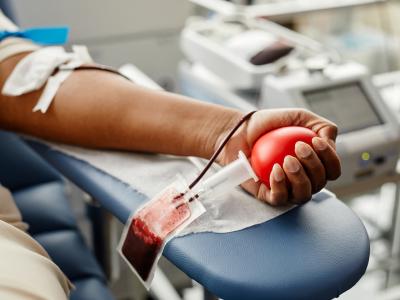Dec 5, 2005 (CIDRAP News) – State and local health officials from around the nation today voiced qualified support for a federal government plan to hold a "summit" meeting on pandemic influenza preparedness in every state over the next few months.
Health and Human Services (HHS) Secretary Michael Leavitt described the plan for a "50-state summit" as part of his quest to achieve an unprecedented level of public health preparedness for the pandemic threat posed by the H5N1 avian flu virus.
"We owe an obligation to the people we serve to make this the best-prepared generation in the history of man, because that's our opportunity," Leavitt said at a Washington, DC, meeting that was broadcast over the World Wide Web.
State and local health officials generally expressed support for the summit meetings and related preparedness efforts, though they had some reservations about costs and about what will happen if the pandemic doesn't materialize. They spoke of "fatigue" from having to prepare for a succession of public health threats in recent years and said the smallpox vaccination program in 2003 damaged their credibility.
Responding to Leavitt's question whether the meetings are a good idea, Mary Mincer Hansen, Iowa's public health director, said, "Absolutely yes. The fact that you're coming to every state is critically important."
Leavitt said he first proposed a "50-state pandemic summit" shortly after President George W. Bush unveiled his $7.1 billion pandemic preparedness strategy on Nov 1. He said governors responded enthusiastically, and plans call for holding at least one meeting in each state over the next 4 months. The first two are scheduled this month in Minnesota and Arizona.
The meetings are part of Leavitt's strategy to drive pandemic planning "deep" into state and local governments, business, and other sectors of society. He has been speaking of the need for strong state and local efforts since HHS released its revised pandemic plan on Nov 2.
Heads of state now understand the significance of the pandemic threat, but local politicians, business leaders, and school officials generally don't, Leavitt said. "We're looking to create a rallying event to help you engage, inform, and motivate people who are critical to your capacity to implement a local strategy," he explained.
HHS officials envision the meetings as lasting about 4 to 6 hours and involving a simple tabletop exercise that could be customized to fit local conditions, Leavitt said.
A number of state and local officials commented after Leavitt asked for their opinions on the summit plan and suggestions for improving it.
Donald E. Williamson, health officer for Alabama, said, "A lot of us in the public health community went through the smallpox episode, and it seriously undermined our credibility. . . . All of us have got to communicate why this is important, and why even if it isn't the pandemic that ends the world, it's still important. If we get people around the table be and the planning begun and then nothing happens, the accumulated effort will dissipate and we'll end up looking like we did after smallpox. We worked a lot and then nobody got vaccinated."
Jim Spears, homeland security adviser for West Virginia, suggested, "Before coming to the states, it might be good to have a train-the-trainer program in place. Maybe have dedicated consultants on a regional basis, with two or three states they're responsible for, so they'd come back repeatedly.
The deputy state health officer for Maine said his state has been planning its own statewide meeting on pandemic flu for Dec 14. "We invite anyone who can to come," he said.
Some state officials voiced concern about the HHS plan for states to share part of the cost for their own stockpiles of antiviral drugs, principally oseltamivir (Tamiflu).
HHS has a goal of obtaining 81 million courses of antiviral treatment, of which 6 million are to be reserved for emergency use to stop a budding pandemic. Leavitt explained that under the plan, HHS will pay for 50 million courses to be allocated to the states. The remaining 25 million treatment courses would also be available to the states, but the federal government would pay only 25% of the cost, with the states bearing the rest.
Even if Congress "didn't appropriate a dime" for pandemic preparedness, "It would still be our constitutional and moral responsibility to do everything that is possible for us to be prepared," Leavitt said. He added that the federal plan to pay for 50 million doses fulfills the government's obligation to ensure that everyone has access to antivirals.
Joan Miles, a state health official from Montana, agreed that states must accept some share of the costs. "We need investment by our state politicians and local politicians as well," she said. "If this helps boost public health investment in our states, that'll be wonderfully beneficial as well."
Oregon Public Health Director Susan M. Allan told Leavitt, "I have a concern about a narrow focus on a single disease as a cause of pulling our state together."
She said Oregon is trying to prepare for other disease threats and that of a West Coast earthquake, which "could make pandemic flu seem mild by comparison." Unless the pandemic planning can be made more broadly applicable to other threats, it could hinder other preparedness efforts, Allen said.
"We did an anthrax plan, we did a smallpox plan, we did a SARS plan, and we're doing another narrow plan," she said. "There's a worn-down-ness" among health planners.
Leavitt replied, "I've worried about this. There's a better than 50% chance, or probably a significant chance, that the H5N1 virus will not be the spark that sets off a global pandemic."
However, he said, two things convince him that pandemic preparations are essential. One is that history shows that "ultimately this is going to happen." Second, a pandemic differs fundamentally from other disasters in that it happens everywhere at the same time.
"I think this will be the most significant exercise in public preparedness in the last 50 years," he added. "Everything we do for a pandemic does in fact help us prepare for any other emergency."
Leavitt said repeatedly that states should follow up on their summit meetings by regularly assessing the progress of preparations.
Kenneth Robinson, MD, Tennessee commissioner of health, suggested that follow-up assessments might not reflect favorably on governors and legislators if they can't set the time fame for such evaluations.
Leavitt responded, "We should not be afraid to have our weaknesses revealed. If we're not prepared, the public should know. . . . I do believe there is an urgency an d a need for some kind of assessment to say, 'This is where we started and this is where we are.'"
Leavitt's description of the summit plans came after a series of briefings on the pandemic threat and response plans by other federal officials, including Homeland Security Director Michael Chertoff, Julie Gerberding of the Centers for Disease Control and Prevention, and Anthony Fauci of the National Institute of Allergy and Infectious Diseases.
See also:
HHS news release
http://archive.hhs.gov/news/press/2005pres/20051205.html
















